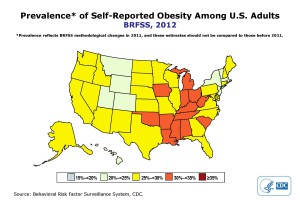
Estimates of obesity in the U.S. range from 30% (Centers for Disease Control data) to 70% (persons selling online and television audience-focused weight-loss programs). We are a nation of fat or fat-obsessed persons, and rightfully so. CDC data shows that the cost of obesity, in 2008 dollars, was estimated at $147 billion. That amount of money would buy a lot of french fries or cheesecake or __ (name your poison).
We all help pay those high-dollar amounts in terms of rising healthcare costs, thus there is considerable interest in finding ways to not only avoid, but also to combat obesity.
In recent years researchers working to understand body fat biology have produced exciting information on differences in types of fat. For instance, we now understand that in addition to white adipose tissue, animals and humans also have brown and beige adipose tissue. White adipose tissue or WAT is commonly found in humans and mice subcutaneously and in visceral fat. Brown adipose tissue or BAT, and beige adipose, is less common, and in humans and mice, is found in deeper cervical, supraclavical and paraspinal areas.
However, these separations of WAT and BAT are not strict; brown adipocytes can develop in WAT and intramuscular fat in humans and mice that are exposed to chronic cold or to beta3-adrenergic receptor stimulation. Beige fat cells are known to come from precursor cells that are distinct from the precursors for brown fat.
Another recent and exciting discovery is that unlike WAT, which is mainly a fat storage depot, BAT can burn calories by uncoupling respiration via mitochondrial uncoupling protein-1 or UCP-1.
In order to know more about the differences in WAT and BAT, and to potentially develop means to identify and study production of one fat type versus another, as well as their interplay, markers to differentiate these fat types are needed. Such markers of white, brown and beige fat currently exist, but generally correspond to either intracellular or secreted proteins, and thus are not useful for in situ identification of primary white, brown or beige fat, nor their precursors.
In an interesting and important side note, these researchers found that immortalized WAT and BAT cells to no longer showed the markers that distinguish their primary fat tissue counterparts.
The research cited here identified three novel cell surface markers for white and brown fat cells by first interrogating a gene expression database to find surface proteins expressed in conjunction with adiponectin (a marker for white adipocytes) or UCP-1 (a marker of brown/beige adipocytes). They then used additional adipocyte-specific criteria to narrow the selection to white or brown adipocyte-specific cell surface markers.
The resulting novel cell surface markers are ASC-1, PAT2 and P2RX5. ASC-1 is a cell-surface marker for white adipocytes, while PAT2 and P2RX5 are specific to brown/beige adipocytes.
Much work needs to be done with these markers to tease out location and lineage of, as well as potential connections of white, brown and beige adipocytes. For instance, these researchers found relatively high levels of ASC-1 in human deep neck fat deposits, generally considered regions of brown fat, demonstrating the heterogeneity of BAT deposits and the need to further characterize BAT and WAT before considering any potential therapeutic or clinical uses of WAT and BAT or their inducers.
Reference:
Ussar, S. et al. (2014) ASC-1, PAT2, and P2RX5 are cell surface markers for white, beige, and brown adipocytes. Sci Transl Med. 6(247).
doi: 10.1126/scitranslmed.3008490.
PMID: 25080478
